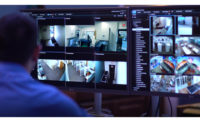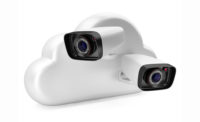In general, 4K UHD refers to an input, display panel or projector that has four times the resolution of high-definition (HD) video. 4K UHD actually defines two different resolutions. Ultra High Definition (UHD) resolution delivers 3840 x 2160 (8.3 million) pixels and Cinematic 4K delivers 4096 x 2160 (8.8 million) pixels. Both resolutions significantly enhance an operator’s ability to monitor finely detailed imagery.
4K UHD also defines much broader color depth. High Definition was 8 bit, whereas 4K UHD is 10 bit. This results in deeper, richer colors and a more lifelike viewing experience.
The new breed of 4K UHD monitors, projectors, set top boxes, media players and video processors are being hailed as the next-generation video standard. However, the limitations imposed by human vision raise some interesting questions about 4K UHD deployments. What applications can benefit most from higher pixel density? In which situations is the incorporation of 4K UHD processing technology most effective?
Here are simple ways in which 4K can improve any existing video wall display.
1. Viewing Distance Versus Resolution
Human vision is confined to a narrow spectrum of wavelengths and resolutions. The eye is capable of resolving various densities and sizes of pixels, but this ability is greatly affected by the distance between the operator and display — the “viewing distance.”
Display devices are available in a wide range of sizes. The smaller the screen or monitor, the more densely packed its pixels will be and the closer the end user needs to be to discern a visible difference between lower and higher resolution imagery.
Display size and viewing distance are critical criteria to determine the situations in which 4K UHD resolution adds value to an application.
2. How to Minimize Bezels
When constructing a multi-monitor video wall, a consideration is the total amount of continuous display space between monitor bezels. Bezels provide a rigid support structure for the panels (glass) in a display. However, on a video wall, bezels also break up the continuous appearance of images scaled across multiple monitors.
With a 4K UHD video wall, integrators can use larger format displays to substitute for an array of lower resolution devices, or use a smaller array to achieve the same resolution, while reducing dead spaces. If continuous imagery is important to an application, then 4K UHD resolution monitors offer this added benefit.
3. Plan for Video Wall Placement
If you need to construct a video wall with the fewest bezels possible and your wall will be viewed from a maximum distance of 10 to 15 feet, then a large 4K UHD display (84 inches to 104 inches) may be the best fit for the installation. In contrast, if the user requires smaller size monitors, and/or plans to view the wall from farther away, then 1080p displays may be a more cost-effective choice.
4. Off the Wall & Onto Your Desk
Affordable 4K UHD monitors are increasingly being used with 4K UHD video processors to create “desktop wall” workstations for operators. Offering 8.3 million pixels for display, a desktop wall provides sufficient resolution for even the most demanding applications.
For example, you can display four full-resolution (unscaled) 1080p input windows on a 4K UHD monitor. If you want to display lower resolution video streams, the right wall processor lets you display up to 12 D1 (704 x 480) sub-windows, 96 CIF (352 x 240) sub-windows, or 324 QCIF (176 x 120) sub-windows, all at full resolution.
That’s a lot of data on a single 4K UHD monitor. When multiple desktop monitors are used, the benefits also multiply.
5. Who Needs a Desktop Wall?
A 4K UHD desktop wall is appropriate for any surveillance application that involves real-time and potentially up-close monitoring of video/graphic information from a variety of sources, such as: operators in traffic management centers, casinos, emergency operations centers, central station surveillance companies and more. The pixel density provided by a 4K UHD desktop wall delivers unsurpassed image clarity, no matter how closely an operator needs to view the monitors.
6. Don’t Forget About Inputs
Even if you choose an HD video wall, there are benefits to being able to process and display 4K UHD content. Because of their higher pixel density, 4K UHD signals can be scaled larger on an HD video wall, while still maintaining image quality.
This use case is particularly relevant for applications that require the display of finely detailed imagery on very large walls, such as multi-megapixel surveillance, satellite telemetry, industrial control applications, and geospatial modeling.
By using 4K UHD inputs, customers have the pixel density required to configure large windows on a large wall, regardless of whether that wall is built with 2K HD or 4K UHD displays.
7. Notable Exceptions
The general rules don’t always apply. Some video wall applications are exceptions to the aforementioned guidelines because they require close-up inspection of ultra high-resolution imagery. These include medical imaging, simulation modeling such as for oil and gas exploration, manufacturing inspection systems, aerial reconnaissance, and megapixel surveillance.
In these cases, users requiring more visibility are likely to walk right up to a video wall, shortening their viewing distance so much that it makes sense to choose the highest resolution displays. 4K UHD processing equipment and video wall monitors are a logical choice in applications where minute details matter and video wall imagery may be subjected to close-up inspection.
8. Don’t Forget About Color
Broader color depth can be particularly useful for applications such as geophysical simulation modeling, thermal imaging, GIS heat mapping, and others where discrete color identification is important.
Color depth can also matter when rich color matters such as in nature video, medical imaging, and presentation graphics.
9. 4K UHD Matters
Video walls have been delivering large-format video output well beyond 4K UHD for years, and now cost-effective 4K UHD on single monitors is becoming mainstream and reducing many of the distractions in video walls such as bezels. Depending on your application, 4K UHD can improve situational awareness, provide greater pixel density, and provide stunning, lifelike imagery in deep, rich color.
MORE ONLINE
For more on 4K video, visit SDM’s website where you’ll find the following articles.
“The Emergence of 4K at ISC West”



